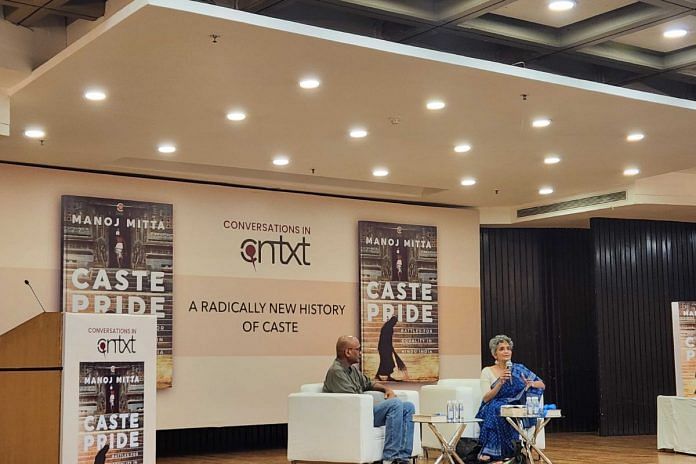New Delhi: The image of Indira Gandhi riding an elephant to visit the remote site of the Dalit massacre in Belchi village, Bihar in 1977 is the stuff of Indian political folklore.
Everybody wrote paeans about it for days, weeks and months. It was etched in political history as the beginning of her comeback. But what is not as widely known is what happened when the case of a dozen Dalit murders reached the court, or how the trial was conducted and what the sentence was. In fact, it wasn’t even seen as a caste atrocity at first. Minister Charan Singh had called it a war between two criminal gangs and was forced to change his stance when Dalit MPs from across party lines mounted an attack.
It was a remarkable moment of parliamentary assertion, said author Manoj Mitta in his new book ‘Caste Pride: Battles for Equality in Hindu India.’ (Westland Books).
“Belchi had a unique distinction, it was the one and only incident of caste atrocity where the killer of Dalits was executed,” said Mitta, who was in conversation with scholar Nivedita Menon at the book launch event at New Delhi’s India International Centre. Death penalties in India have been awarded predominantly to marginalised communities. “It was a milestone in history.”
First, the Patna High Court in 1982 and then the Supreme Court bench headed by Justice Syed Murtaza Fazl Ali awarded the death penalty to the two killers in 1983.
Mitta’s book says that Belchi was, for the large part, relegated to a ‘footnote’ in India’s political history. The chapter on Belchi, therefore, “embodies the first attempt to record the legal history of Belchi, from the commission of the crime to the execution of the death penalty”. It diligently recreates the evidence, witness testimonies and judge’s observations, the split verdict and the appeal.
Caste Pride has many such critically important documentation of the battle against the endemic caste system and the dogged pushback against it. In the process, the book celebrates pioneers like Maneckji Dadabhoy, MC Rajah, R Veerian, as well as British colonial officer John Elliot Drinkwater Bethune.
Dadabhoy was the first to break the silence in the Imperial Legislative Council on untouchability in 1916. Rajah was the first Dalit legislator in Madras who argued with the governor about the need to access public amenities. And R. Veerian’s work in passing the first law against untouchability in 1926. Mitta said that there is just not enough historical attention and scholarship on their roles in a focused manner in one place so that readers can discern patterns.
“The kind of calumny Dadabhoy, a Parsi, faced, he was accused of being unmindful of the sensitivities of the Hindus,” Mitta said. He added that the strongest opposition came from Congress leaders Madanmohan Malviya and Surendranath Banerjee. “Congress party was where the Hindu Right was located then.”
Also Read: Non-Dalits can go through life not knowing Ambedkar’s work, jolt needed: Author Ashok Gopal
Filling a critical gap
Chandrachud’s ruling in Belchi and the massacre itself has been covered by the media. But the details of the trial haven’t found much scrutiny. The book gives a trajectory of many such legislative interventions, and legal callisthenics to establish a chronicle of those who pushed, those who resisted, and the detailed deliberations that were conducted.
The third in Mitta’s trilogy, after books on mass violence in 1984 and 2002, Caste Pride also looks at the role played by the British officers to identify and address the inequality among the Hindus. Its scope ranges from temple entry to inter-caste marriage, the Kshatriyas’ fight against Brahmins to not be regarded as ‘shudras’, and the tensions between Indian legislators and colonial administrators on caste reforms.
Nivedita Menon called the book the “secret history of caste in the labyrinthine of the law”.
“Caste is a reality. Many Indians have the privilege to say there is no caste anymore in India. I don’t have that privilege,” said Magsasay award-winner and founder of Safai Karamchari Andolan Bezwada Wilson. “Manoj’s book shows us how the judiciary responded to issues of caste, how the law helped caste inequality. People say the caste system is a social, cultural and religious problem. But it is also a legal problem.”
The book fills a critical and inexcusable gap in Indian historiography on the legal life of caste.
“Our documentation culture is poor. Our history is coloured by dominant groups’ views,” Mitta said. “If I studied the intersection of race and law in the United States, I would find it very difficult to find anything new or original to write about. There’s so much available already. But the intersection of caste and law in India is a virgin territory.”



